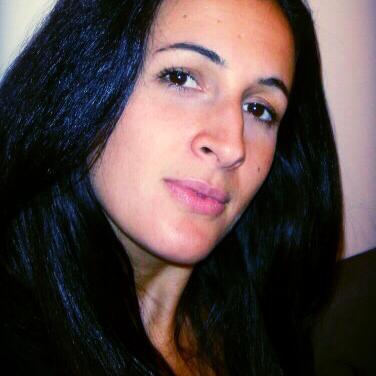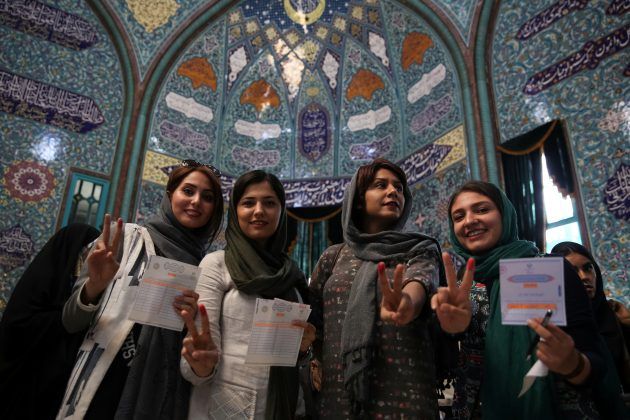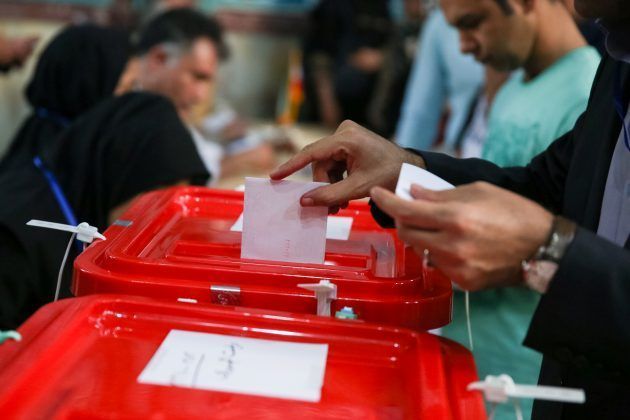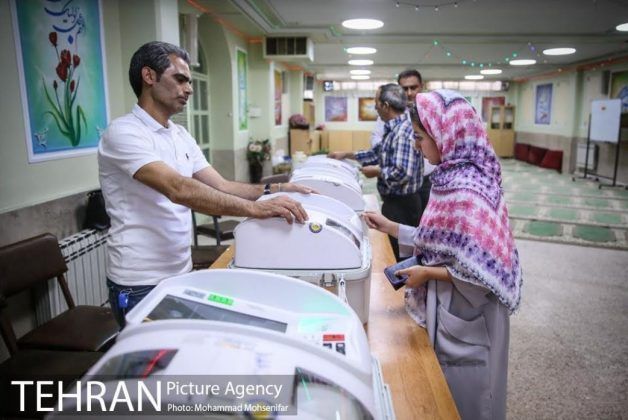
The first fully electronic voting system in Iran’s history has been used to select nominees to the Islamic City Council of Tehran, the country’s capital, according to Iranian officials.
The election, which was held on July 26, incorporated 7,000 electronic ballot boxes set up in 1,700 polling stations across the municipality, the secretary of the executive committee of Tehran’s City Council, Hamid Tahayei, said.
The City Council of Tehran is responsible for electing the Mayor of Tehran and overseeing the municipality’s budgets. The use of e-voting during the local elections was viewed by Iranian officials as a test run ahead of parliamentary elections set to take place in February 2020.
[aesop_image img=”https://kayhanlife.com/wp-content/uploads/2019/09/2017-05-19T204345Z_1393632799_RC18E3866270_RTRMADP_3_IRAN-ELECTION.jpg” panorama=”off” credit=”FILE PHOTO: An Iranian woman shows her ink-stained finger after casting her vote during the presidential election in a polling station in Tehran, Iran, May 19, 2017. REUTERS./” align=”center” lightbox=”off” captionsrc=”custom” captionposition=”left” revealfx=”off” overlay_revealfx=”off”]
While the e-voting system has been welcomed by ballot staff for its efficiency — votes can be rounded up after polls close and final results delivered the following day — some officials, political movements and analysts are concerned that the digitized system might be vulnerable to fraud.
Dr. Ali Ansari, a Professor of Iranian History at the University of St. Andrews in Scotland, told Kayhan Life that the e-voting system could be susceptible to interference if it wasn’t properly regulated.
“An electronic voting system could arguably be a much better way to run polls, but this will depend entirely on who is in charge of the infrastructure,” He explained. “If Iran had a separate, independent electoral commission which was completely impartial, then that’s one thing, but if the system is going to be run centrally from the Ministry of the Interior, the voting process could be open to manipulation.”
Previous attempts to implement an e-voting system were documented during Iran’s 2009 presidential elections. The Iranian government announced that votes for the elections would be entirely computerized, suggesting that this would prevent any chance of fraudulent activity during the election process.
The Guardian Council, a body made up of 12 Islamic jurists tasked with monitoring Iranian parliamentary and presidential elections, called on the votes to be counted manually and e-voting set aside, noting problems with the software at the time. However, the unusually fast count and release of the votes during the 2009 elections led analysts to conclude that at least some of the tallies at the regional level had been done online.
Further concerns over the voting process in 2009 came to a head when Mahmoud Ahmadinejad was elected President of Iran.
The Islamic Republic News Agency, the Iranian government’s official media outlet, announced that Ahmadinejad had won the election with 62 percent of the votes, sparking national protests after members of the Iranian public said irregularities in the voting results indicated that the election had been rigged. The Guardian Council agreed to do a recount of 10 percent of the votes and concluded that election fraud had not occurred.
Iran’s current voting system requires voters to fill out their forms by hand, a process which Dr. Ansari says is also fraught with problems.
“Unlike European elections, the ballot paper in Iran is quite difficult to write out. You have to write the full name of the candidate along with several other details, so if you should get any of the details wrong, your ballot is spoiled. This makes the voting process much more open to the possibility of fraud because everything is hand-written,” he explained.
Advocates of the new e-voting system say that the speed at which the computers can compile the votes and produce the results, as well as its potential to reduce human error, are all welcome improvements to Iran’s voting infrastructure.
Still, concerns over transparency remain.
A 2016 report from Human Rights Watch said the Guardian Council’s ability to disqualify electoral candidates was affecting Iran’s ability to hold “free and fair parliamentary elections,” after the hard-line Guardian Council disqualified the majority of reform candidates using what Human Rights Watch called discriminatory and arbitrary criteria.
A total of 56 candidates were disqualified from running in the July elections, Hamid Tahayei told Press TV. Mr. Tahayei did not give reasons for the disqualifications.
A total of 12,030 candidates competed for the assistant positions on Tehran’s City Council. More than 500,000 people cast their ballots using the new e-voting booths.
The results of the election were published on August 25, which included the re-election of reformist politician Mohsen Hashemi Rafsanjani as the Council’s Chair. Ebrahim Amini also regained his seat as the Vice-Chairman of the Council. Counsellors Zahra Nejad-Bahram and Bahareh Arvin remained in their positions as secretaries of the board of directors, while Hassan Rasouli was elected as treasurer for the City Council. Ali A’ta was elected spokesman for the Council.






